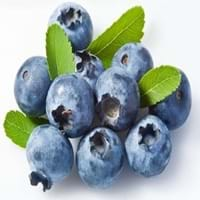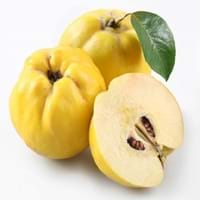Health Benefits
Cancer prevention, Cures gastro-intestinal troubles, Improves night vision, Improves stomach health, Prevents diabetes, Prevents high blood pressure, Reduces blood circulation problems
Cancer prevention, Cures gastro-intestinal troubles, Reduces nervous tension, Ulcer prevention
General Benefits
Fights against infections, Helps in weight loss, Prevents blood clotting in vessels, Treatment of urinary tract infections
Anti oxidant properties, Anti-inflammatory properties, Boosts immune system, Controls blood pressure, Digestive aid, Eye care, Helps in weight loss, Improves blood circulation, Maintains healthy cholesterol level
Skin Benefits
Anti-aging benefits, Nourishes skin, Protects against skin damage
Anti-aging benefits, Reduces wrinkles
Hair Benefits
Prevents hair loss
Regulates hair growth
Allergy Symptoms
Not Available
NA
Side Effects
Decrease in blood sugar levels, Diarrhoea, Dizziness, Headache, Internal bleeding, Stomach pain
Allergic reaction
Best Time to Eat
As a snack in the late afternoon, Don't consume at night and before bed, Eat the fresh ones, avoid mixing with any other foods, don't eat after meal., Morning time (before lunch)
As a snack in the late afternoon, Don't consume at night and before bed, Eat the fresh ones, avoid mixing with any other foods, don't eat after meal., Morning time (before lunch)
Vitamin B5 (Pantothenic Acid)
Vitamin C (Ascorbic Acid)
Vitamin E (Tocopherole)
Not Available
Vitamin K (Phyllochinone)
Not Available
Lutein+Zeaxanthin
Not Available
Calories in Fresh Fruit with Peel
Calories in Fresh Fruit without Peel
Not Available
Not Available
Calories in Frozen Form
Not Available
Not Available
Calories in Dried Form
Not Available
Calories in Canned Form
Not Available
Not Available
Varieties
Dwarf bilberry, Piper, bog blueberry, Northern bilberry, Mountain bilberry and Oval-leaved bilberry
Meech’s Prolific, Lusitanica, Champion and Vranja AGM
Color
Dark purple
Green, Yellow
Inside Color
Light Green
White
Origin
Unknown
Iran, South-West Asia, Turkey
Soil Type
Moist, Well-aerated
Loam, Well-drained
Climatic Conditions
Cold
Warm
Facts about
- Bilberries are used in manufacturing of alcoholic drinks.
- They are used to improve aromas of sorbets.
- The green extract of it's leaves is used in textile industry as natural dye.
- Due to its strong & fruity aroma, brides consumed quince to ensure "perfumed lips".
- It is also called as ‘Pear of Cydonia’, being native to Caucasus and Iran.
- They call it as the ‘golden apple’ of Greek Mythology.
Top Producer
Japan
Turkey
Other Countries
Denmark, Finland, Iceland, Sweden
Algeria, Argentina, Azerbaijan, China, Iran, Morocco, Serbia, Spain, Uzbekistan
Top Importer
United States of America
United States of America
Top Exporter
Chile
Argentina
Botanical Name
Vaccinium myrtillus
Cydonia oblonga
Synonym
blaeberry, whinberry, European blueberry, whortleberry
C. vulgaris
Subkingdom
Tracheobionta
Tracheobionta
Division
Magnoliophyta
Magnoliophyta
Class
Magnoliopsida
Magnoliopsida
Subclass
Dillenhidae
Rosidae
Family
Ericaceae
Rosaceae
Species
Vaccinium myrtillus
C. oblonga
Difference Between Bilberry and Quince
We might think that Bilberry and Quince are similar with respect to nutritional value and health benefits. But the nutrient content of both fruits is different. Bilberry and Quince Facts such as their taste, shape, color, and size are also distinct. The difference between Bilberry and Quince is explained here.
The amount of calories in 100 gm of fresh Bilberry and Quince with peel is 44.00 kcal and 57.00 kcal and the amount of calories without peel is Not Available and Not Available respectively. Thus, Bilberry and Quince belong to and category.These fruits might or might not differ with respect to their scientific classification. The order of Bilberry and Quince is Ericales and Rosales respectively. Bilberry belongs to Ericaceae family and Quince belongs to Rosaceae family. Bilberry belongs to Vaccinium genus of Vaccinium myrtillus species and Quince belongs to Cydonia genus of C. oblonga species. Beings plants, both fruits belong to Plantae Kingdom.









